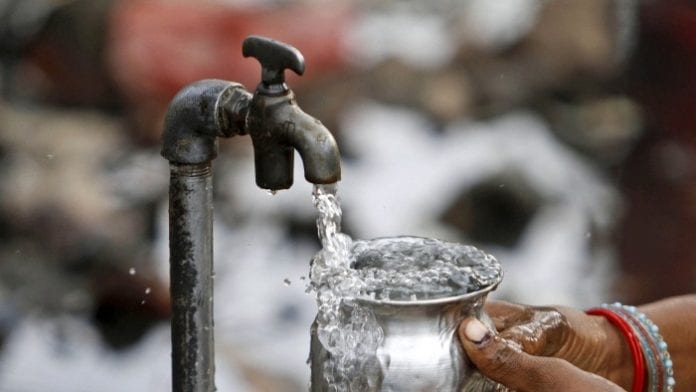Shoumyakant Joshi
Clean and adequate water is essential for survival and this has a direct bearing on positive health outcomes and food security of India. Most countries have committed to providing clean water and sanitation to every citizen in alignment with UN’s Sustainable Developmental Goal (SGD) – 6. Taking this goal ahead, the Union government started Jal Jeevan Mission (JJM) – Har Ghar Nal Se Jal a year ago to provide 55 LPCD safe drinking water to all households by 2024 through functional household tap connections. For this, we need sustainable water sources.
Though the use of surface water has been given priority under JJM, groundwater is the major source for drinking water in both urban and rural India, and simultaneously an important source of water for agricultural and industrial sectors. India is the highest groundwater user in the world, extracting about 25 per cent of global resources. About 85 per cent of rural water and 45 per cent of urban water supplies here are met using groundwater resources. Groundwater has emerged as the primary water source where access to surface water is limited.
India manages to store only 10 per cent of annual rainfall. Due to increased demand for water for domestic, industrial and agricultural needs and limited surface water resources, coupled with inadequate recharge measures, there is over-exploitation of groundwater resources. As per the water stress index, 11 out of the 20 big cities in India are facing water scarcity. According to the Ministry of Jal Shakti, the availability of per capita water per year has declined from 5,177 to 1,341 cubic metres since Independence. This crisis needs attention on water recharge and harvesting measures in a campaign or mission mode.
The Centre has identified 256 water-stressed districts and efforts were channelled for water conservation and rainwater harvesting in the first phase of the Jal Shakti Abhiyan. The existing bottlenecks need to be addressed. First, due to poor community involvement and lack of demand for any water source recharge measure, source sustainability is at stake. People consider water as an infinite resource, and this mind-set doesn’t encourage the community to be involved and act on water conservation or recharge practices. Water is treated as a private resource in India due to a lack of a standard groundwater management and regulation act across states. This allows us to extract groundwater at any level without adequate water recharge accountability. This makes groundwater extraction indiscriminate and unscientific.
Second, Gram Panchayat is the key local institution with ample opportunity to take water recharge and conservation activities at the community level through the MGNREGA and Finance Commission fund. But, due to lack of understanding on groundwater and water security, Panchayat Raj Institution (PRI) members are not able to recognise the essence of water recharge and harvesting. So, they never take water recharge action on a priority basis. Implementation of any water recharge and harvesting activity requires technical skills which are rarely found among PRIs. Even though some Gram Panchayats push water recharge action in their mandated Gram Panchayat Development Plan (GPDP) through participatory planning process, those plans are often diluted because of misplaced priorities.
Third, to understand area-specific hydrological conditions, aquifers, and its recharge zone for the selection of appropriate technology for groundwater recharge, districts and states should have sufficient skilled resources which include hydrologist, geo-hydrologist, and engineer.
Fourth, all concerned departments like minor irrigation and agriculture, housing and urban planning, water resources, rural development, and Panchayati Raj, drinking water and sanitation mission, pollution control board, forest and environment, and other stakeholders shall maintain co-ordination for planning and implementation of water security projects. But there is a glaring gap in inter-departmental convergence and collaborative action for both planning and implementation.
Take, for instance, Nuapada district of Odisha. This is a severely fluoride affected district, where drinking water department is looking for surface water source and putting in efforts to control of groundwater extraction. Unfortunately, through the Deep Borewell Secha Karyakrama scheme, the state has dug 2,711 deep borewells during 2011-2017 for irrigation.
Fifth, rainwater harvesting (RWH) is a solution to the drinking water crisis. But, at present, RWH structures are being promoted widely for recharge purposes and not for water harvesting and storage. Multiple stakeholders are developing infrastructure at large scales for water conservation and harvesting. Yet, due to poor operation and maintenance the infrastructure is getting damaged soon.
Sustainable water conservation and recharge measures are needed alongside an efficient implementation framework.
The writer is with the regional planning, monitoring and evaluation cell of Water Aid India, Bhubaneswar.
